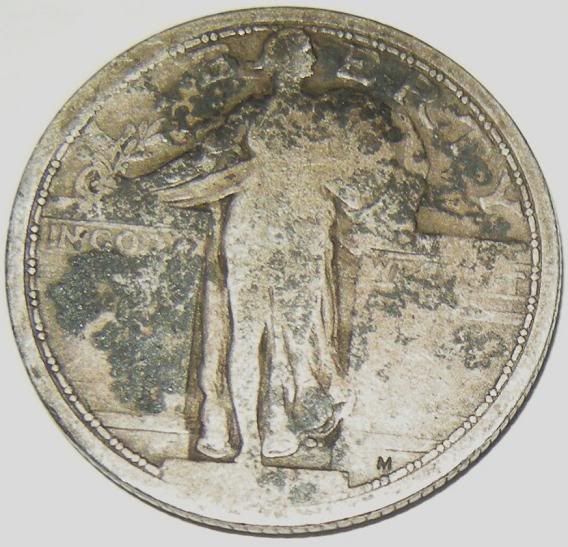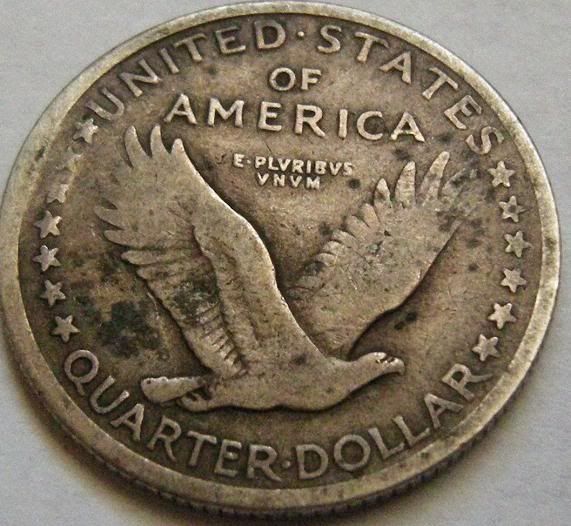New 1916 slq cherried. Grade and Advice
I recently cherried this 916 slq from a lot. It by far has the strongest details of any one I've found yet, but it has some issues. Most notably, the black residue on the obverse. I'm not sure if it's corrosion, there is not even the slightest bit of pitting or porosity, but it probably is a form of it and it definitely is unattractive. I tried an acetone dip, with little success. It is also bent slightly, but only obvious when looking at it from the side. Anyways, is it worth sending to NCS, or should I just have it slabbed as is? Any other suggestions for removing the black death?
Grade opinions are welcome too.


Grade opinions are welcome too.


All coins kept in safety deposit box.
0
Comments
An authorized PCGS dealer, and a contributor to the Red Book.
"Everything is on its way to somewhere. Everything." - George Malley, Phenomenon
http://www.american-legacy-coins.com
Have to say that NCS is your best bet. Regardless she's a nice 1916, better than the previous 5 you located.
<< <i>This latest find has much more remaining detail than the previous 5 that you found. The foreign matter on the surface looks like base metal that was fused to the coin as a result of exposure to fire. NCS may be your only hope to remove that. >>
I was going to say it looks more "charred" than "cherried"
60 years into this hobby and I'm still working on my Lincoln set!
NCS? Do you think the fee charged by them will exceed the value of the conserved coin? If not, then that may be one way to go.
It has the most detail of any of your 6 cherries. Too bad about the dark spots/areas on the obverse and reverse.
I really like the look of the reverse. Very crusty and original looking with eye appeal [a circulated cameo look]. If the black spots on the reverse were not present, it would be gorgeous.
As far as the obverse goes, I simply could not leave it like it is. An attempt to remove the black areas on the reverse will result in:
1. success with the coin being improved significantly [and saved from further damage from the removed substances]; or
2. no success [but likely not a coin in a more damaged condition than it is now] and a coin still worth what is worth now.
I say send it in to NCS and keep your fingers crossed.
<< <i>That black crud is, indeed, unattractive. >>
OK, yeah, but... hey... it's a freakin' 1916 SLQ cherrypick, fer cryin' out loud!
If it weren't low grade and ugly, it would've been picked long, long ago!
I for one must applaud.
As far as the deposits go, I've dug silver coins while out detecting that had similar issues. It's tough to get off.
My recommendation would be electrolysis. It's often a good, nonabrasive way to get hard-set crud off a coin.
You'll have a shinier coin afterward that will look cleaned, because it will have been cleaned. But I think the crud will come off, given time. You have to watch out for electrolysis on unstable, corroded coins- I accidentally "burnt up" the first Draped Bust cent I ever dug- but silver is usually pretty stable and does OK. I cleaned a 1787 Spanish half-real I found once with excellent results. (Of course it wasn't that crusty.) It has since retoned beautifully over the past decade in my detector finds album.
Congrats! I've been looking for years and haven't found one yet.
Garrow
Well done!
See http://www.doubledimes.com for a free online reference for US twenty-cent pieces